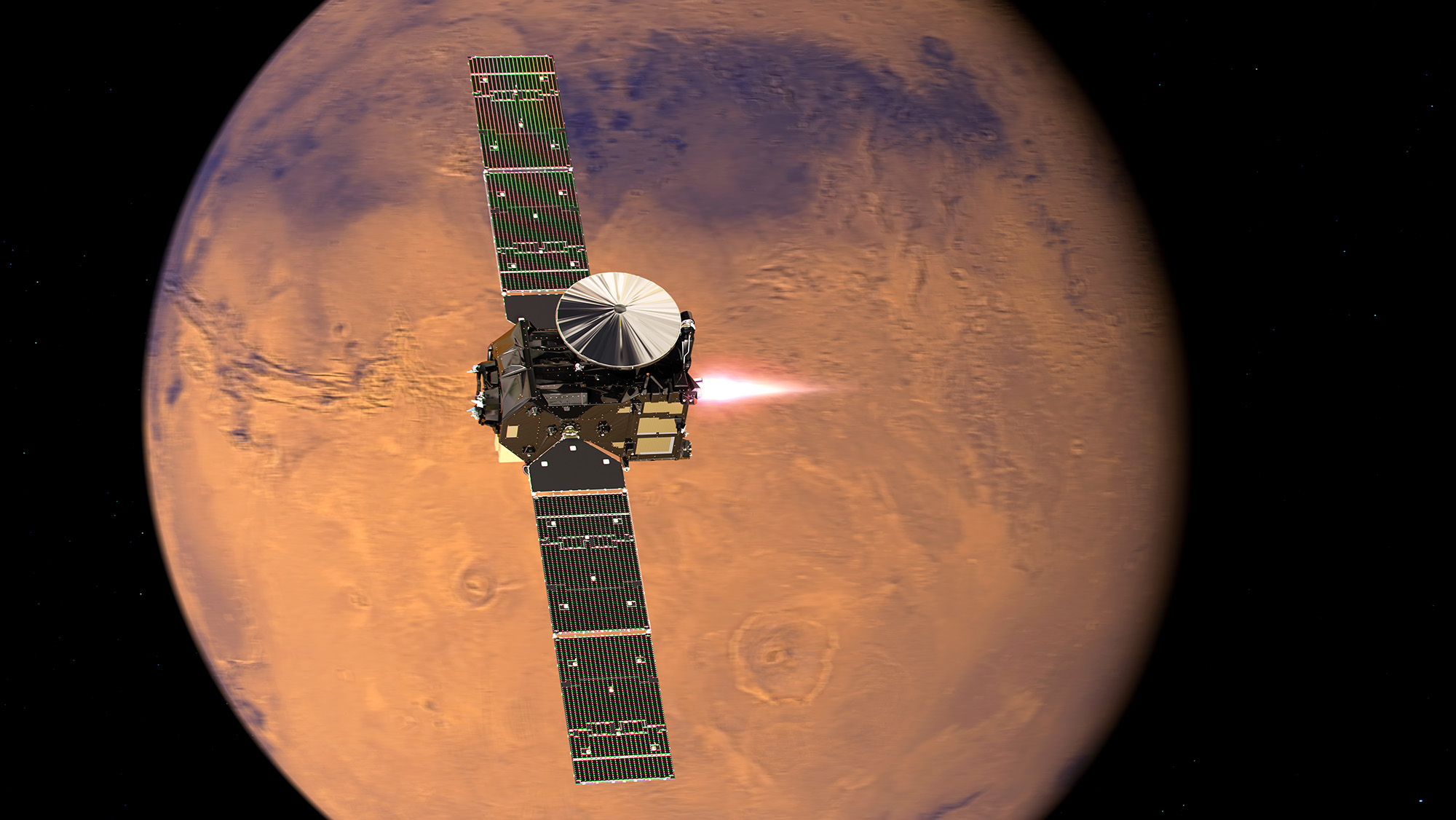[UPDATED 27 JUL] On 28 July, ExoMars/TGO will perform one of the most important activities during its voyage to Mars: a powerful engine burn in deep space that will change the craft’s direction and velocity by 326.497 m/second.
This manoeuvre – dubbed DSM-1 (for deep-space manoeuvre 1) – will provide 95% of the push needed to line the spacecraft up to intercept the Red Planet on 19 October, targeting the landing site chosen for the Schiaparelli mission: Meridiani Planum. A second DSM is planned for 11 August, and trim manoeuvres are set for Sep and October.

ExoMars/Trace Gas Orbiter (TGO) with its engine firing to start its entry into Mars orbit on 19 October 2016. Credit: ESA/ATG medialab
The mission operations team at ESOC have already started preparing for this critical burn (the propellant system was pressurised for the first time on Wednesday this week), and this includes conducting a test of the craft’s 424-N main engine, which has not yet been used. This very small burn (ca. 1 m/second delta-v) is dubbed DSM-0, and will take place on Monday, 18 July at 11:00 GMT (13:00 CEST).
Being that the spacecraft already more than 70 million kilometers away, each command sent by the ESOC control centre takes more than 4 minutes to reach ExoMars/TGO, travelling at light speed. All the manoeuvre commands are, therefore, pre-loaded on board and will be automatically executed at the correct time.
The commands for the test burn will be uploaded today between 17:29-20:07 GMT (19:29-22:07 CEST).
If, as expected, all goes well with the test burn, the flight dynamics team will prepare the commands for the much bigger DSM-1 burn within 26 July, and these in turn will be uploaded later that day for execution on the 28th, with the burn starting at 09:30 GMT (11:30 CEST) and lasting about 30 50 mins. When this is complete, ExoMars/TGO and Schiaparelli will be (mostly) on a course to intercept the Red Planet on 19 October.
A highly precise spacecraft navigation technique, called Delta-DOR (for ‘delta-differential one-way ranging’ – see Brightest Beacons) will be used to assess the burn performance and calculate any corrective manoeuvres needed to meet the very precise trajectory requirements driven by the lander mission. Note that the error in the lander entry angle into the atmosphere must be less than 1 degree to achieve a successful landing.
A second DSM burn is planned for 11 August, and this slot will also be used as a rehearsal for the Mars Orbit Insertion (MOI) manoeuvre; the spacecraft will be configured in a special mode designed just for that time-critical manoeuvre, which will ensure that the orbit-entry burn would continue even in case of any failures on board (such failures can trigger a ‘safe mode’, which normally would shut down the engine – which is precisely what we don’t want to have happen doing MOI).
As of today, ExoMars/TGO has travelled about 300 million km since launch; on 28 July, this will have increased to about 335 million km.

Discussion: 2 comments
Best of Luck
Very informative write-up